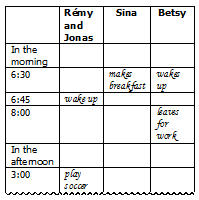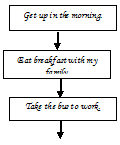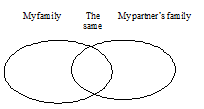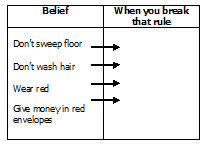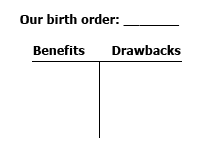Resources
CAELA Network Briefs
Promoting Learner Transitions to Postsecondary Education and Work: Developing Academic Readiness Skills From the Beginning
Betsy Parrish and Kimberly Johnson
Hamline University, St. Paul, Minnesota
April 2010
Background on Adult Learners
Adult education programs serve both native English speakers and those whose first language is not English. Native English speakers attend adult basic education (ABE) classes to learn basic skills to earn high school equivalency certificates or to achieve other goals related to job, family, or further education. English language learners attend English as a second language (ESL), ABE, or workforce preparation classes to improve their oral and written skills in English and to accomplish goals similar to those of native speakers. Increasingly, programs provide educational opportunities to facilitate the transitions of adult education students into postsecondary education and career pathways.
Audience for This Brief
This brief is written for practitioners—teachers, teacher educators, counselors, and program administrators—who work with adult English language learners in ESL classes at any level, and for education researchers focusing on general instruction or on instruction that promotes transitions for adult English language learners to postsecondary education and work.
Background
It has been estimated that of the nearly two million immigrants who enter the United States every year, nearly half have limited access to citizenship, job training, other postsecondary education, and jobs due to low literacy levels, limited formal schooling, and limited English language skills (National Commission on Adult Literacy, 2008). Adult education programs serving this population can play an important role in helping learners develop the skills they need to succeed in postsecondary education and to obtain, retain, and advance in employment. Given the skills needed for the high-demand occupations of the future, it is increasingly important that adult education programs expand the scope of opportunities offered so that adults learning English are prepared with the language, knowledge, and skills they need to be successful, whether their immediate goals include gaining a vocational training certificate, an associate’s degree, a bachelor’s degree, or a specific job (Bailey & Mingle, 2003; Jones & Kelly, 2007; Lacey & Wright, 2009; Mathews-Aydinli, 2006).
A report from the National Center on Education and the Economy (2009) argues that adult education should be redesigned to promote postsecondary and workplace readiness for all learners. This means that the skills that learners need in order to transition successfully to higher levels of education or employment should be integrated into every level of instruction, including ESL classes that are focused primarily on language instruction. This brief reviews the literature on the skills needed for adult English language learners to transition to academic study and employment and the time it takes to develop those skills. It then focuses on the results of a recent survey completed by the authors, which revealed instructors’ perceptions of skills needed by learners in order to be successful in academic programs. Finally, the brief offers examples of activities and strategies that can be used at beginning, intermediate, and advanced levels of ESL instruction to help learners develop these skills.
Skills Needed to Make Transitions
A growing body of literature identifies the skills needed for English language learners to transition successfully to postsecondary education in preparation for work (Alamprese, 2005; Di Tommaso, 2005; Jiang & Grabe, 2007; Johnson & Parrish, in press; Mathews-Aydinli, 2006; National Commission on Adult Literacy, 2008; Rance-Roney, 1995; Rao, 2005). Many of these skills are appropriately taught at advanced and transition levels. They include non-academic skills such as time management and the ability to prioritize and organize assignments and responsibilities (Mathews-Aydinli, 2006; National Center for Family Literacy and Center for Applied Linguistics, 2008). They also include academic skills, such as the ability to write college-level papers (Santos, 2004), and academic knowledge of subjects such as history and psychology.
Many other academic readiness skills can be introduced and developed long before students reach advanced-level classes. Examples of such skills include listening and reading for specific information and making and confirming predictions. Although individual student goals may vary—some want better jobs, some want to earn a GED, some want to go to college—these skills are beneficial for most adults in their daily lives. Given the time it takes to master academic readiness skills, the development of complex skills in early levels of instruction may facilitate students’ progress throughout their education and as they move toward meaningful employment.
Time Needed to Master Academic Readiness Skills
The time that it takes English language learners to acquire academic readiness skills is highly dependent on their prior experience with formal schooling (Cummins, 2000). Immigrants to the United States who have completed high school or college in their home country probably have experience in a formal classroom setting and most likely have learned academic language and concepts in their own language that they can transfer to learning in English. On the other hand, students who come to adult education with limited or interrupted formal schooling may not have had the chance to develop academic readiness skills and strategies in their own language.
Research on children learning English in K–12 settings indicates that it can take from 7 to 15 years to acquire academic language skills even when instruction is focused and continuous (Collier, 1989; Thomas & Collier, 1997; see Garcia, 2000, for a summary of this research). Many adult learners, with the demands of jobs and families, are only able to participate in formal instruction on a part-time basis and have few opportunities to use English outside of class. This adds to the time it can take them to acquire both language and academic skills. Research suggests that adults learning English can benefit from instruction in academic skills while they are still in ESL classes, even at beginning levels, rather than waiting until they are in advanced and transition-level classes (Washington State Board for Community and Technical Colleges, 2005).
Integration of Academic Skills Into Instruction
A recent study of instructional alignment surveyed Minnesota ABE instructors and college and university faculty in the fields of developmental education, health care, and trades and technical education. The purpose of the survey was to identify the skills expected of students in postsecondary academic programs and the types of academic skills taught in ABE classes. Responses revealed that many academic skills that are expected of college students, such as reading and listening, organizing information and taking notes, and thinking critically, are receiving limited attention in adult education programs (Johnson & Parrish, in press; for a summary of the survey findings, see ABE Teaching and Learning Advancement System, 2008). Specific activities that can be used in ABE programs to help students develop these skills are described later in this brief.
Reading and Listening
Reading and listening skills are important in academic and workplace preparation, during which adults may be listening to instructors’ lectures or preparing for a workplace credential exam. Specific reading and listening skills should be introduced and practiced long before learners reach advanced levels. In particular, research has shown that skilled readers determine the importance of specific statements, monitor their comprehension, make predictions, and ask questions while reading (Di Tommaso, 2005). Similarly, skilled listeners listen selectively for particular words, phrases, or idea units; monitor their comprehension; and use a variety of clues to infer the meaning of unknown words (Cohen & Dörnyei, 2002; Graham, Santos, & Vanderplank, 2008). Practice of these skills in instruction should be explicit and include introduction to, modeling of, and guided practice with specific reading and listening strategies (Graham & Macaro, 2008) such as these:
-
Listening and reading for specific information and to understand the overall message
-
Making and confirming predictions
-
Inferring intended meaning and attitudes
-
Using background knowledge and a variety of clues (linguistic, metalinguistic, and contextual) to infer the meaning of unknown words
Organizing Information and Taking Notes
Whether in a technical skills class or an academic class, learners are expected to organize knowledge and record information, and the ability to do so can have a positive impact on academic performance (Di Tommaso, 2005). Mastery of effective organization and note-taking skills takes time, so explicit techniques should be introduced early and proficiency with them built gradually, to the point where students can use these skills independently by the time they exit from their program (Konrad, Joseph, & Eveleigh, 2009; Makany, Kemp, & Dror, 2009). The use of graphic organizers to analyze text has been shown to increase reading comprehension (Jiang & Grabe, 2007) and to enhance learners’ understanding and retention of and ability to use new knowledge (Bransford, Brown, & Cocking, 2000).
A system of guided note-taking called Cornell Notes (Pauk, 2001) can be used to help students develop organizing and note-taking skills (Figure 1).

Figure 1. Sample Cornell Notes
In Cornell Notes, students divide their paper into three sections: one for key points, one for notes, and one for a summary. They then use this form to review, reflect on, and study their notes. Other activities that can be used to help students develop organizing and note-taking skills include the following:
-
Sorting tasks
-
Use of graphic organizers such as Venn Diagrams and flow charts
-
Concept mapping and use of matrices
Thinking Critically
Critical thinking is the process of questioning and reflection that allows us to understand, evaluate, and solve problems and take informed action (Kaspar & Weiss, 2005). Critical thinking skills are vital for adults to thrive in their communities, in postsecondary education, and at work. Brookfield (1987) argues that critical thinking is the survival skill of adult life. It is a misconception that adults in ESL classes do not know how to think critically or employ higher order thinking skills (Reimer, 2008). Most of these students have made complex decisions for themselves and their families about their lives in the United States, their jobs, and their children’s schooling, and many speak two or more languages. At the same time, they may have had limited experience with formal schooling or have come from an educational system that does not focus on critical thinking or development of higher order thinking skills (Chowdhury, 2003).
The following critical thinking skills should be introduced and encouraged at all levels of adult ESL instruction:
-
Identifying assumptions
-
Organizing
-
Categorizing
-
Interpreting
-
Inquiring
-
Analyzing and evaluating
-
Summarizing and synthesizing
-
Making decisions
Sample Activities for Integrating Academic Skills Into Instruction
This section describes ways of integrating the development of listening and speaking skills, organizing and note-taking skills, and critical thinking skills into all levels of instruction. The sample activities are guided by the following principles:
-
Strategies instruction is integrated into all reading and listening lessons (Di Tommaso, 2005).
-
Opportunities are provided for guided and structured practice of new strategies (Graham & Macaro, 2008).
-
Learners are taught strategies that help them organize information (Jiang & Grabe, 2007; Konrad, Joseph, & Eveleigh, 2009).
-
Learners are taught organizational strategies that help them recognize the structure of texts (Bransford, Brown, & Cocking, 2000; Jiang & Grabe, 2007).
-
Instruction builds gradually to the point where students use skills and strategies independently (Graham & Macaro, 2008).
-
Learners are given tasks that promote critical thinking (Van Duzer & Florez, 1999).
Sample activities for beginning, intermediate, and advanced ESL instruction illustrate the ways that existing content and common ESL activities can be used to develop academic readiness skills. These activities demonstrate the multiple ways that information can be organized, building from simple to complex note-taking strategies to the integration of reading, listening, and critical thinking skills into all instruction. Each activity lists its associated academic skills and strategies along with the principles that it addresses.
Beginning-Level ESL Activities
Table 1 describes sample activities for a beginning-level ESL lesson on daily routines. The teacher provides a simple story about a family’s routines. It could be her own or learners’ stories presented orally, using pictures, or in writing; or it could be a story from a beginning-level text. After leading a warm-up activity to develop background information and vocabulary (e.g., showing pictures of daily routines and asking questions and teaching specific words), teachers can have students organize the information provided in a variety of ways. The activities described here could be used for a lesson on job routines as well.
Table 1. Beginning-Level ESL Activities
| Sample activities (Appropriate for NRS low beginning and high beginning—ESL levels 2 & 3) | Higher order skills and strategies introduced | How the lesson addresses one or more principles |
Activity 1 After reading, the students in each group exchange information to complete the chart for their group:
|
|
Reading for information to fill in just one column promotes selective reading strategies. Filling in a time table while reading introduces the concept of chronological organization of text. The grid provides an initial step to organizing information and using note-taking strategies. |
Activity 2 |
|
Completing the chart provides guided and structured practice with organizing information. |
Activity 3
|
|
Putting the information in a new form provides practice with organizing information in a new way. Personalizing the task, with reading as a model, is a precursor to independent use of organizational strategies. |
Intermediate-Level ESL Activities
Table 2 describes sample activities for an intermediate-level lesson on holidays, which is a fairly typical theme in ESL classes. These activities demonstrate how academic readiness skills can be integrated into any general or life-skills ESL class. That is, the content does not have to be academic in nature.
Table 2. Intermediate-Level ESL Activities
| Sample activities (appropriate for NRS low intermediate and high intermediate—ESL levels 4 & 5) | Higher order skills and strategies introduced | How the lesson addresses one or more principles |
Activity 1 Activities: bake and cook with family, sing songs, take walks, watch movies on TV
Students guess what the holiday is. |
|
Mind maps give opportunities to organize information. |
Activity 2 |
|
Using these mind maps can be a precursor to using mind maps for note-taking purposes. Mind maps give opportunities to categorize information in new ways. |
Activity 3 Talk to a partner in the class and find some ways that you celebrate in your families that are the same and some that are different.
Find out from your partner
|
|
The Venn diagram helps learners recognize visually the concept of comparing and contrasting information. Venn diagrams can be used to practice organizing information in a new way. Follow-up questions move students beyond talking about surface aspects of culture (e.g., food, clothing) to thinking critically about their choices. |
Activity 4 Before listening to a short interview with someone about Chinese New Year, students share anything they know about the beliefs associated with this holiday and make predictions about what the person interviewed will say. |
|
Making predictions involves using a listening strategy that allows learners to compare existing knowledge to new knowledge. |
Activity 5 Afterward, students compare class predictions to information from the interview. |
|
Taking notes using a mind map develops the strategies of selective listening and listening to confirm predictions. Using a mind map is an early form of guided note-taking. |
Activity 6
Students then discuss these questions:
|
|
Listening for cause and effect promotes a critical understanding of the text. Completing the cause-effect chart promotes listening for specific information. Completing the cause-effect chart provides practice with complex, guided note-taking. Follow-up questioning promotes critical thinking. Discussing origins of beliefs promotes higher order thinking about traditions. |
Advanced-Level ESL Activities
Table 3 describes advanced-level activities on a theme— birth order theory—that could be of general interest to a group of adult learners and that moves toward content that is more academic in nature.
Table 3. Advanced-Level ESL Activities
| Sample activities (appropriate for NRS advanced level—ESL level 6 and beyond) | Higher order skills and strategies introduced | Principles addressed in the lesson |
Activity 1 Once in birth-order groups, they brainstorm the benefits and drawbacks of their birth order and record their ideas on a T-chart.
|
|
The T-chart helps learners organize information. Comparing their experiences and synthesizing that information promotes critical thinking. |
Activity 2 Groups mingle and interview others in class to complete the other branches of the tree. |
|
Completing a tree diagram helps learners organize information. Completing a tree diagram provides a model for developing independent note-taking skills. |
Activity 3
|
|
Placing items on a continuum promotes multiple critical thinking skills, including interpreting, analyzing, evaluating, and decision-making. |
Activity 4
|
|
Negotiating and prioritizing questions as a group promotes critical thinking skills. |
| Activity 5 Students listen to a short lecture (online or teacher-created) on birth-order theory. Students fill in partially completed Cornell Notes (see below). Students then write a final summary. |
|
Completing Cornell Notes provides practicing in note-taking. The use of Cornell Notes promotes the use of effective listening strategies. Using Cornell Notes provides guided practice in a note-taking strategy that students can use independently. Writing a final summary requires students to think critically about what they have listened to in the lecture. |
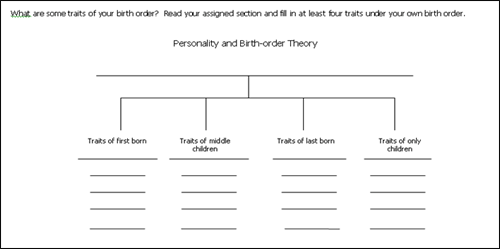
Figure 2. Tree Diagram
Conclusion
Most adult learners need to employ the skills and strategies outlined in this brief in order to participate fully in education and work. The activities presented here are but a few of the possibilities available to teachers to help their students acquire these skills. Teachers who are intentional about developing activities that lead to deeper understanding of content, increased critical thinking, and greater independence will provide learners with the tools they need to succeed in postsecondary education and the workplace.
References
ABE Teaching and Learning Advancement System. (2008). Instructional practices alignment project summary. Retrieved from http://www.hamline.edu/education/
academics/centers/sltl/atlas/FY08_Alignment_Proje.pdf
Alamprese, J. (2005). Helping adult learners make the transition to postsecondary education (Adult Education Background Papers). Cambridge, MA: Abt Associates. Retrieved from Community Partnerships for Adult Learning website: http://www.
c-pal.net/pdf/transition.pdf
Bailey, A., & Mingle, J. (2003). The adult learning gap: Why states need to change their policies toward adult learners. Denver, CO: Education Commission of the States, Center for Community College Policy.
Bransford, J., Brown, A., & Cocking, R. (2000). How people learn: Brain, mind, experience, and school. Washington, DC: National Academy Press.
Brookfield, S. (1987). Developing critical thinkers: Challenging adults to explore alternative ways of thinking and acting. San Francisco, CA: Jossey-Bass.
Chowdhury, M. R. (2003). International TESOL training and EFL contexts: The cultural disillusionment factor. Australian Journal of Education 47(3), 283-302.
Cohen, A. D., & Dörnyei, Z. (2002). Focus on the language learner: Motivation, styles, and strategies. In N. Schmitt (Ed.), An introduction to applied linguistics (pp.170-190). London, England: Edward Arnold.
Collier, V. (1989). How long? A synthesis of research on academic achievement in a second language. TESOL Quarterly, 21(4), 617-641.
Cummins, J. (2000). Language, power, and pedagogy: Bilingual children in the crossfire. Clevedon, England: Multilingual Matters.
Di Tommaso, K. (2005). Strategies to facilitate reading comprehension in college transition students (Research to Practice Brief No. 5). Boston, MA: National College Transition Network, World Education. Retrieved from http://www.collegetransition.org/promising/rp5.html
Garcia, G. (2000). Lessons from research: What is the length of time it takes limited English proficient students to acquire English and succeed in an all-English classroom? Washington, DC: National Clearinghouse for Bilingual Education.
Graham, S., & Macaro, E. (2008). Strategy instruction in listening for lower-intermediate learners of French. Language Learning, 58(4), 747–783.
Graham, S., Santos, D., & Vanderplank, R. (2008). Listening comprehension and strategy use: A longitudinal exploration. System 36, 52–68.
Jiang, X., & Grabe, W. (2007). Graphic organizers in reading instruction: Research findings and issues. Reading in a Foreign Language, 19, 34-55.
Johnson, K., & Parrish, B. (in press). Aligning instructional practices to meet the academic needs of adult ESL students. TESOL Quarterly.
Jones, D., & Kelly, P. (2007). Mounting pressures facing the U.S. workforce and the increasing need for adult education and literacy. New York, NY: National Commission on Adult Literacy. Retrieved from http://www.nationalcommissiononadultliteracy.org/
content/nchemspresentation.pdf
Kaspar, L., & Weiss, S. (2005). Building ESL students’ linguistic and academic literacy through content based interclass collaboration. Teaching English in the Two-Year College, 32(3), 282-297.
Konrad, M., Joseph, L., & Eveleigh, E. (2009). A meta-analytic review of guided notes. Education and Treatment of Children, 32(3), 421-444.
Lacey, T., & Wright, B. (2009). Occupational employment projections to 2018. Monthly Labor Review, 132(11), 82–123. Retrieved from Bureau of Labor Statistics website: http://www.bls.gov/opub/mlr/2009/11/art5full.pdf
Makany, T., Kemp, J., & Dror, I. (2009). Optimising use of note-taking as an external cognitive aid for increasing learning. British Journal of Educational Technology, 40(4), 619-635.
Mathews-Aydinli, J. (2006). Supporting adult English language learners' transitions to postsecondary education. Washington, DC: Center for Applied Linguistics. Retrieved from http://www.cal.org/caela/esl%5Fresources/briefs/transition.html
National Center for Family Literacy and Center for Applied Linguistics. (2008). Practitioner toolkit: Working with adult English language learners. Louisville, KY, and Washington, DC: Authors. Retrieved from http://www.cal.org/caela/tools/
program_development/CombinedFiles1.pdf
National Center on Education and the Economy, Workforce Development Strategies Group. (2009). Background and supporting evidence for adult education for work. Retrieved from Jobs for the Future website:
http://www.jff.org/sites/default/files/AEW_Background.PDF
National Commission on Adult Literacy. (2008). Reach higher America: Overcoming crisis in the U.S. workforce. New York, NY: Author. Retrieved from http://www.nationalcommissiononadultliteracy.org/
ReachHigherAmerica/ReachHigher.pdf
Pauk, W. (2001). How to study in college (7th ed.). Boston, MA: Houghton Mifflin.
Rance-Roney, J. (1995). Transitioning adult ESL learners to academic programs. Washington, DC: Center for Applied Linguistics. Retrieved from http://www.cal.org/caela/esl_resources/digests/RANCE.html
Rao, D. (2005). What can we learn from developmental reading research in postsecondary education? (Research to Practice Brief No. 2). Retrieved from National College Transition Network, World Education website:
http://www.collegetransition.org/promising/rp2.html
Reimer, J. (2008). Learning strategies and low-literacy Hmong adult students. MinneWITESOL Journal, 25. Retrieved from http://minnetesol.org/journal/index_vol25.html
Santos, M. G. (2004). Some findings on the academic vocabulary skills of language-minority community college students. Focus on Basics 6(D), 7-9. Retrieved from National Center for the Study of Adult Learning and Literacy website: http://www.ncsall.net/index.php?id=175
Thomas, W., & Collier, V. (1997). School effectiveness for language minority students (NCBE Resource Collection Series, No. 9). Washington, DC: National Clearinghouse for Bilingual Education.
Van Duzer, C., & Florez, M. (1999). Critical literacy for adult English language learners. Washington, DC: Center for Applied Linguistics. Retrieved from http://www.cal.org/caela/esl_resources/digests/critlit.html
Washington State Board for Community and Technical Colleges. (2005). I-BEST: A program integrating adult basic education and workforce training (Research Report No. 05-2). Olympia, WA: Author.
This document was produced at the Center for Applied Linguistics (4646 40th Street, NW, Washington, DC 20016 202-362-0700) with funding from the U.S. Department of Education (ED), Office of Vocational and Adult Education (OVAE), under Contract No. ED-07-CO-0084. The opinions expressed in this report do not necessarily reflect the positions or policies of ED. This document is in the public domain and may be reproduced without permission.

